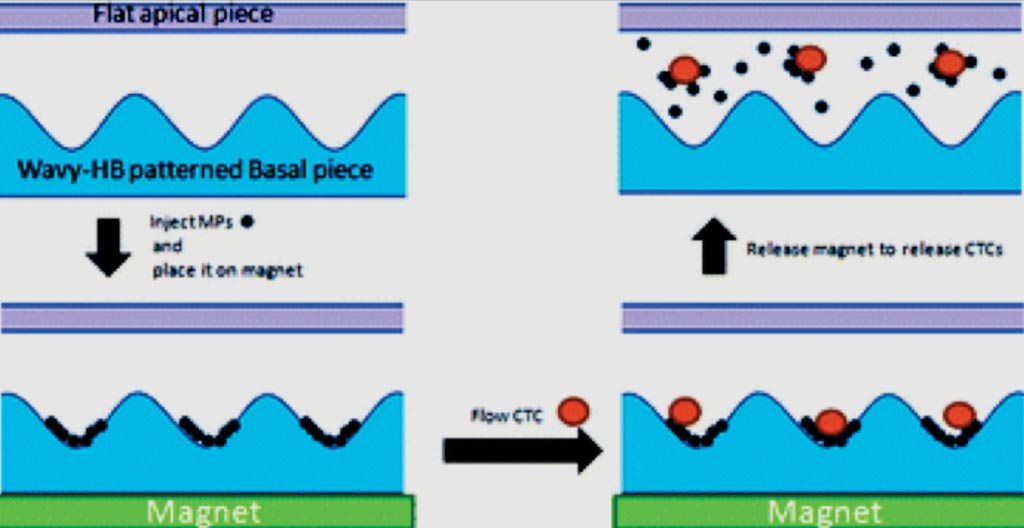Cancer Blood Test Engineered to Detect Tumors Early
By LabMedica International staff writers
Posted on 02 May 2018
A new innovative microfluidic device has been developed that uses magnetic particles and wavy-herringbone design to capture and release circulating tumor cells (CTC) with a high capture efficiency rate at different tumor cell concentrations.Posted on 02 May 2018
The microfluidic device achieves two key standards by which the success of CTC devices is measured: high capture efficiency and high selectivity. Capture efficiency refers to the percentage of CTCs that the device collects. Selectivity measures how well it rejects unwanted cells, such as red and white blood cells.

Image: A diagram of the microfluidic device that uses magnetic particles and wavy-herringbone design to capture and release circulating tumor cells (Photo courtesy of Lehigh University).
Scientists at Lehigh University (Bethlehem, PA, USA) designed a device to create passive turbulence and increase the possibility of tumor cells colliding with the device wall. The rectangular chip, which is less than a few square centimeters and using as little as a few milliliters of blood, is made of the polymer PDMS. The chip's key feature is a tiny flow channel on a hierarchically designed pad that is optimized to capture tumor cells from the blood flowing across it.
Under an external magnetic field, magnetic particles (MPs) coated with anti-epithelial cell adhesion molecules (EpCAM) against a tumor cell surface protein (EpCAM) were immobilized over the wavy-herringbone (wavy-HB) surface to capture tumor cells. After removing the magnetic field, the captured cells with surplus MPs were released from the device and collected; thus, these cells could be re-cultured for further analysis.
Under optimized conditions, the capture efficiency of the tumor cells can be as high as 92% ± 2.8%. Capture experiments were also performed on whole blood samples, and the capture efficiency was in a high range of 81% to 95%, at different tumor cell concentrations. The authors concluded that such a method can potentially be used for CTC sorting from patient blood samples, CTC concentration monitoring, therapeutic guidance and drug dosage choice, and further study of tumors, such as drug screening and tumor mutations.
Yaling Liu, PhD, an associate professor and the senior author of the study, said, “With metastatic cancers accounting for around 90% of deaths from solid tumors, the hope is that one day a device that can enable the analysis of single tumor cells circulating in the blood could make a big difference in early diagnosis, detection and monitoring of numerous types of cancer, without invasive biopsies.” The study was presented April 18, 2018, at Royal Academy of Science International Trust’s The Future of Medicine conference held in Istanbul, Turkey.
Related Links:
Lehigh University













